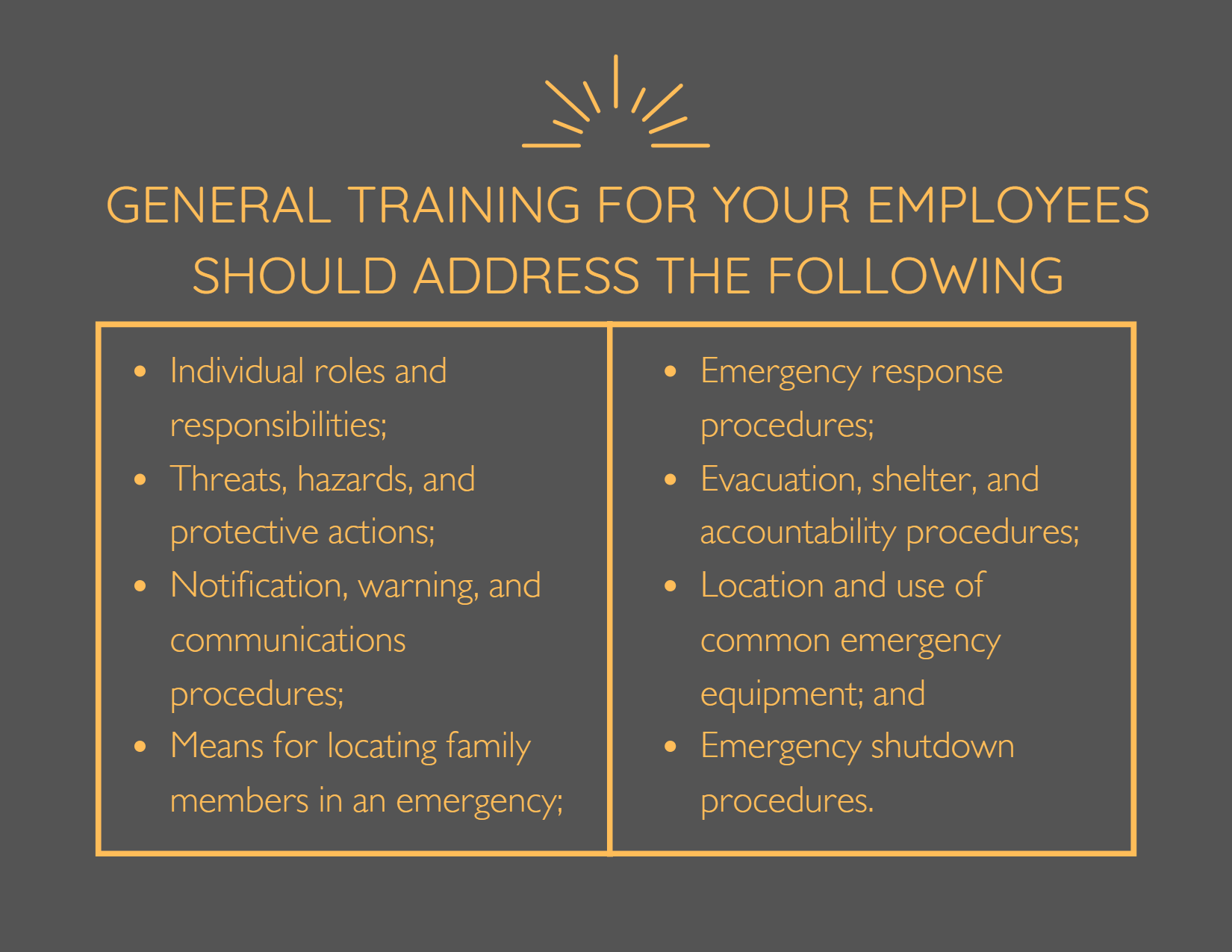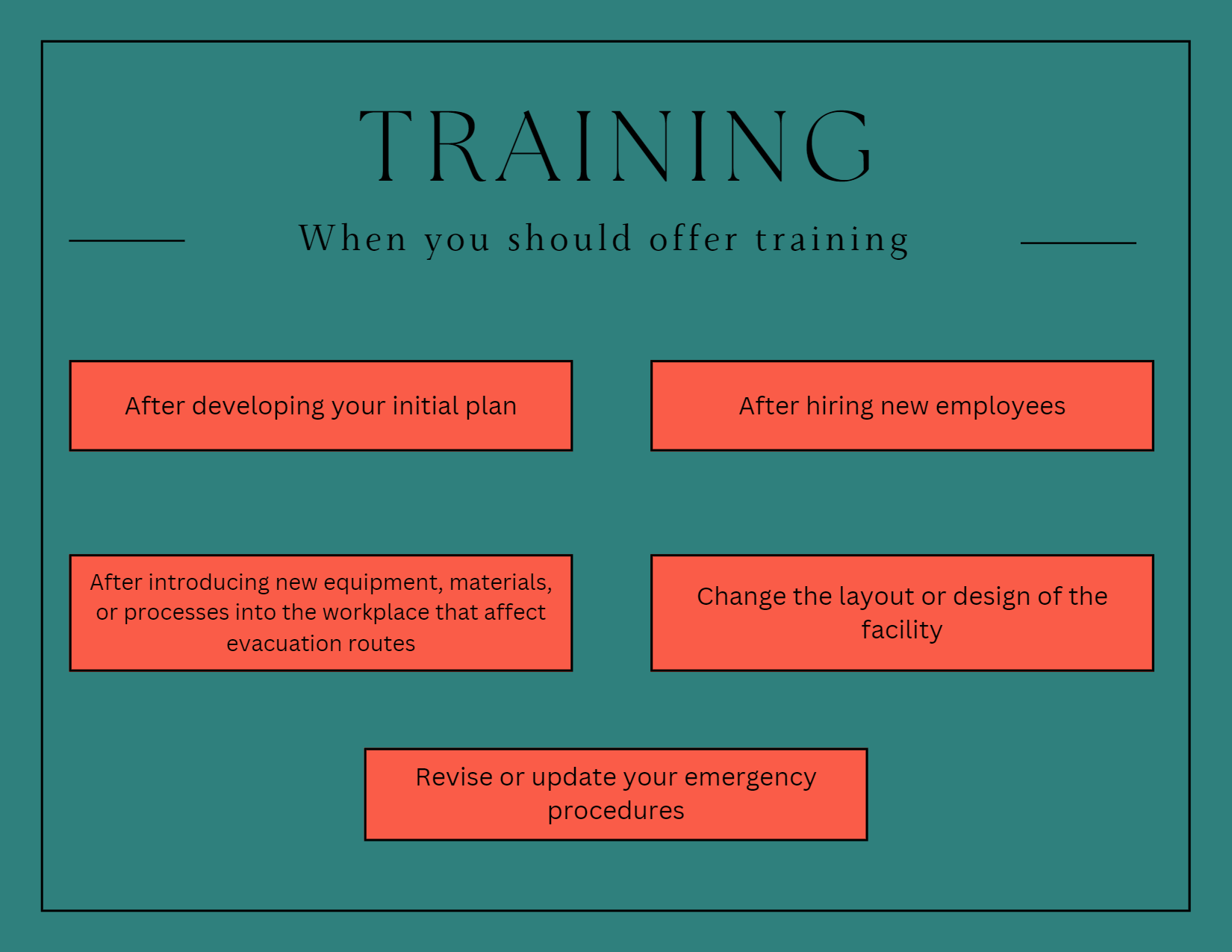Educate your employees about the types of emergencies that may occur and train them in the proper course of action. The size of your workplace and workforce, processes used, materials handled, and the availability of onsite or outside resources will determine your training requirements. Be sure all your employees understand the function and elements of your emergency action plan, including types of potential emergencies, reporting procedures, alarm systems, evacuation plans, and shutdown procedures. Discuss any special hazards you may have onsite such as flammable materials, toxic chemicals, radioactive sources, or water-reactive substances. Clearly communicate to your employees who will be in charge during an emergency to minimize confusion.
General training for your employees should address the following:

You also may wish to train your employees in first-aid procedures, including protection against blood-borne pathogens; respiratory protection, including the use of an escape-only respirator; and methods for preventing unauthorized access to the site.
Once you have reviewed your emergency action plan with your employees and everyone has had the proper training, it is a good idea to hold practice drills as often as necessary to keep employees prepared. Include outside resources such as fire and police departments when possible. After each drill, gather management and employees to evaluate the effectiveness of the drill. Identify the strengths and weaknesses of your plan and work to improve it.
How often do you need to train your employees?
Review your plan with all your employees and consider requiring annual training in the plan. Also, offer training when you do the following:

Drills and exercises should also be conducted to validate an emergency response, business continuity and crisis communications plans and to evaluate the ability of personnel to carry out their assigned roles and responsibilities.